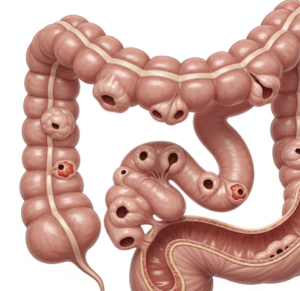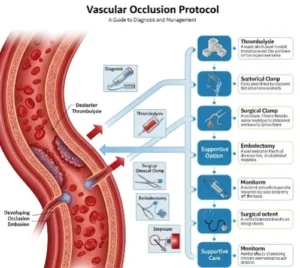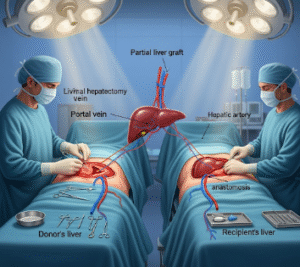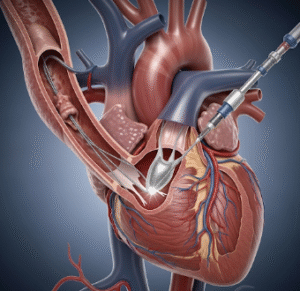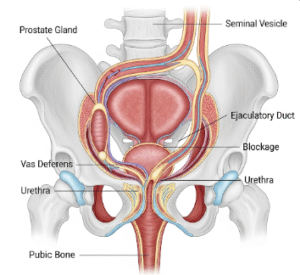Overview
Budd-Chiari Syndrome (BCS) is a rare but serious condition caused by obstruction of the hepatic veins, which carry blood out of the liver. This blockage leads to hepatic congestion, liver enlargement, abdominal pain, and potentially life-threatening liver failure.
In Korea, Budd-Chiari Syndrome is treated in hepatology and gastroenterology centers, where advanced imaging, interventional procedures, and liver support therapies are available. Korean healthcare emphasizes early diagnosis, effective management of liver function, and prevention of complications to improve patient outcomes.
What is Budd-Chiari Syndrome?
Budd-Chiari Syndrome occurs when blood flow from the liver to the heart is blocked, either by blood clots (thrombosis) in the hepatic veins or by compression or narrowing of the veins. The resulting congestion increases pressure in the liver, leading to:
- Hepatomegaly (enlarged liver)
- Abdominal pain and swelling
- Ascites (fluid accumulation in the abdomen)
- Liver dysfunction, which can progress to cirrhosis or liver failure
BCS can be acute, subacute, or chronic, depending on the speed and extent of venous obstruction.
Symptoms
Symptoms of Budd-Chiari Syndrome vary according to the severity and duration of the obstruction:
- Sudden or chronic abdominal pain, particularly in the upper right quadrant
- Hepatomegaly, detectable as liver enlargement on physical examination
- Ascites, leading to abdominal swelling and discomfort
- Jaundice (yellowing of the skin and eyes)
- Nausea and vomiting
- Fatigue and malaise
- Enlarged spleen (splenomegaly) in chronic cases
- Variceal bleeding in advanced liver disease
- Lower extremity edema due to systemic venous congestion
Causes
Budd-Chiari Syndrome arises from obstruction of hepatic venous outflow, which may result from:
- Blood clots (thrombosis) due to inherited or acquired coagulation disorders
- Polycythemia vera or other myeloproliferative disorders
- Pregnancy or oral contraceptive use, increasing clotting risk
- Liver tumors or cysts compressing hepatic veins
- Infections or inflammation affecting the hepatic vasculature
- Idiopathic cases, where no clear cause is identified
Risk Factors
- Hypercoagulable states, including Factor V Leiden mutation and protein C or S deficiency
- Pregnancy or postpartum period
- Hormone therapy, such as oral contraceptives
- Myeloproliferative disorders
- Liver malignancy or hepatic tumors
- Chronic inflammatory conditions, such as lupus or Behçet’s disease
- Genetic predisposition in rare cases
Complications
If untreated, Budd-Chiari Syndrome can lead to serious complications:
- Acute liver failure in severe obstruction
- Cirrhosis due to chronic congestion
- Portal hypertension, leading to ascites, varices, and gastrointestinal bleeding
- Hepatic encephalopathy, causing confusion and altered mental status
- Kidney dysfunction due to congestion or impaired perfusion
- Increased risk of thrombosis in other veins
- Reduced quality of life due to chronic pain and fatigue
Prevention
Preventive measures focus on reducing risk factors for thrombosis and liver congestion:
- Management of blood clotting disorders under medical supervision
- Regular monitoring during pregnancy or hormone therapy
- Treatment of underlying liver conditions or tumors
- Healthy lifestyle, including maintaining a balanced diet and avoiding smoking
- Prompt evaluation of abdominal pain, swelling, or jaundice
- Early intervention for liver or vascular diseases to prevent venous obstruction
Treatment Options in Korea
Diagnosis
Diagnosis relies on clinical evaluation, imaging, and laboratory tests:
- Medical history and physical examination for abdominal pain, hepatomegaly, and ascites
- Blood tests to assess liver function, coagulation status, and platelet count
- Doppler ultrasonography to detect hepatic vein obstruction
- CT or MRI scans for detailed visualization of hepatic veins and liver structure
- Venography in complex cases to identify the site and extent of blockage
Medical Management
Treatment depends on the severity and underlying cause:
- Anticoagulant therapy to prevent clot formation and reduce further obstruction
- Diuretics for management of ascites and fluid retention
- Pain management for abdominal discomfort
- Treatment of underlying disorders, such as myeloproliferative diseases or liver tumors
- Antibiotics or supportive care if infection is present
Interventional and Surgical Therapies
Advanced interventions are available in Korean tertiary hospitals:
- Angioplasty or stenting to reopen obstructed hepatic veins
- Transjugular intrahepatic portosystemic shunt (TIPS) to relieve portal hypertension
- Liver transplantation in cases of fulminant liver failure or end-stage liver disease
- Surgical bypass of obstructed veins in selected cases
Supportive Care
- Nutritional support to maintain liver health
- Regular monitoring of liver function, coagulation, and portal pressures
- Lifestyle modifications, including reduced alcohol consumption and balanced diet
- Patient education for symptom recognition and adherence to therapy
Prognosis
The prognosis of Budd-Chiari Syndrome depends on early diagnosis, timely intervention, and underlying cause:
- Acute BCS treated promptly with anticoagulation and interventional therapy has good survival rates
- Chronic BCS may require long-term management of liver function and portal hypertension
- Liver transplantation offers excellent outcomes for patients with end-stage liver disease
- Korean hepatology centers provide comprehensive care, including advanced imaging, interventional radiology, and surgical options, ensuring improved survival and quality of life
With multidisciplinary management, modern diagnostics, and targeted therapies, Budd-Chiari Syndrome in Korea is effectively addressed, allowing patients to regain liver function, prevent complications, and maintain a high quality of life.



